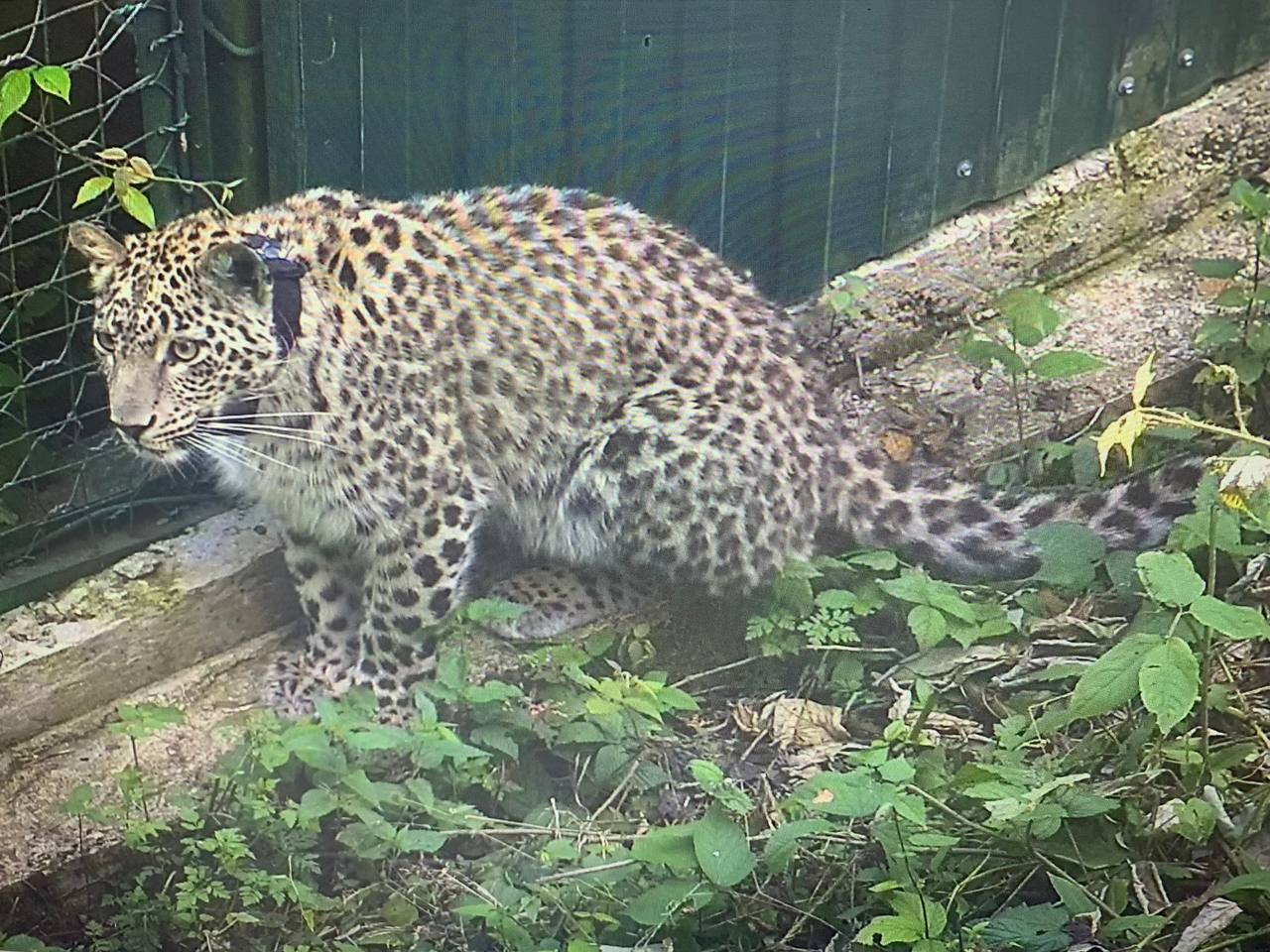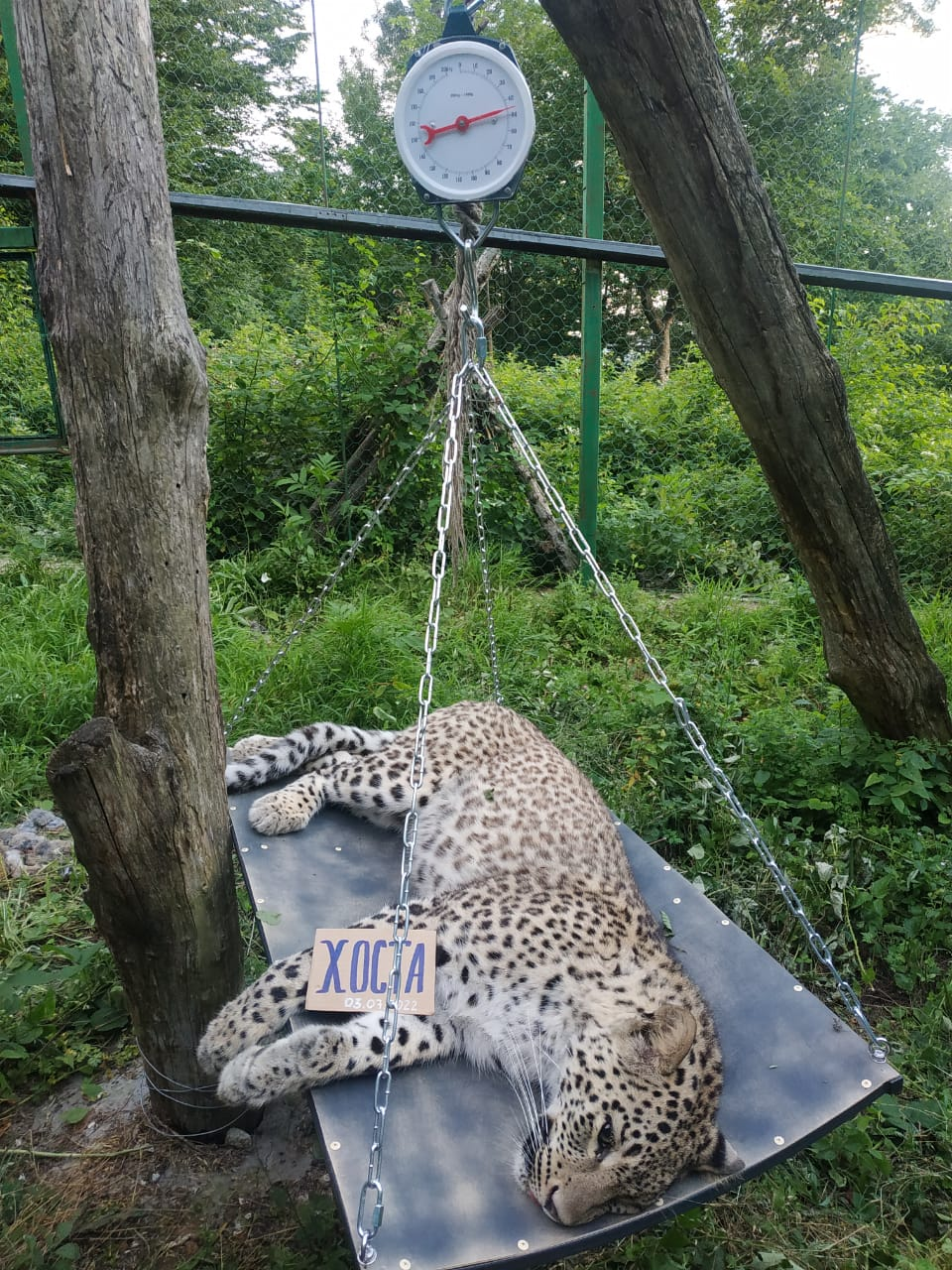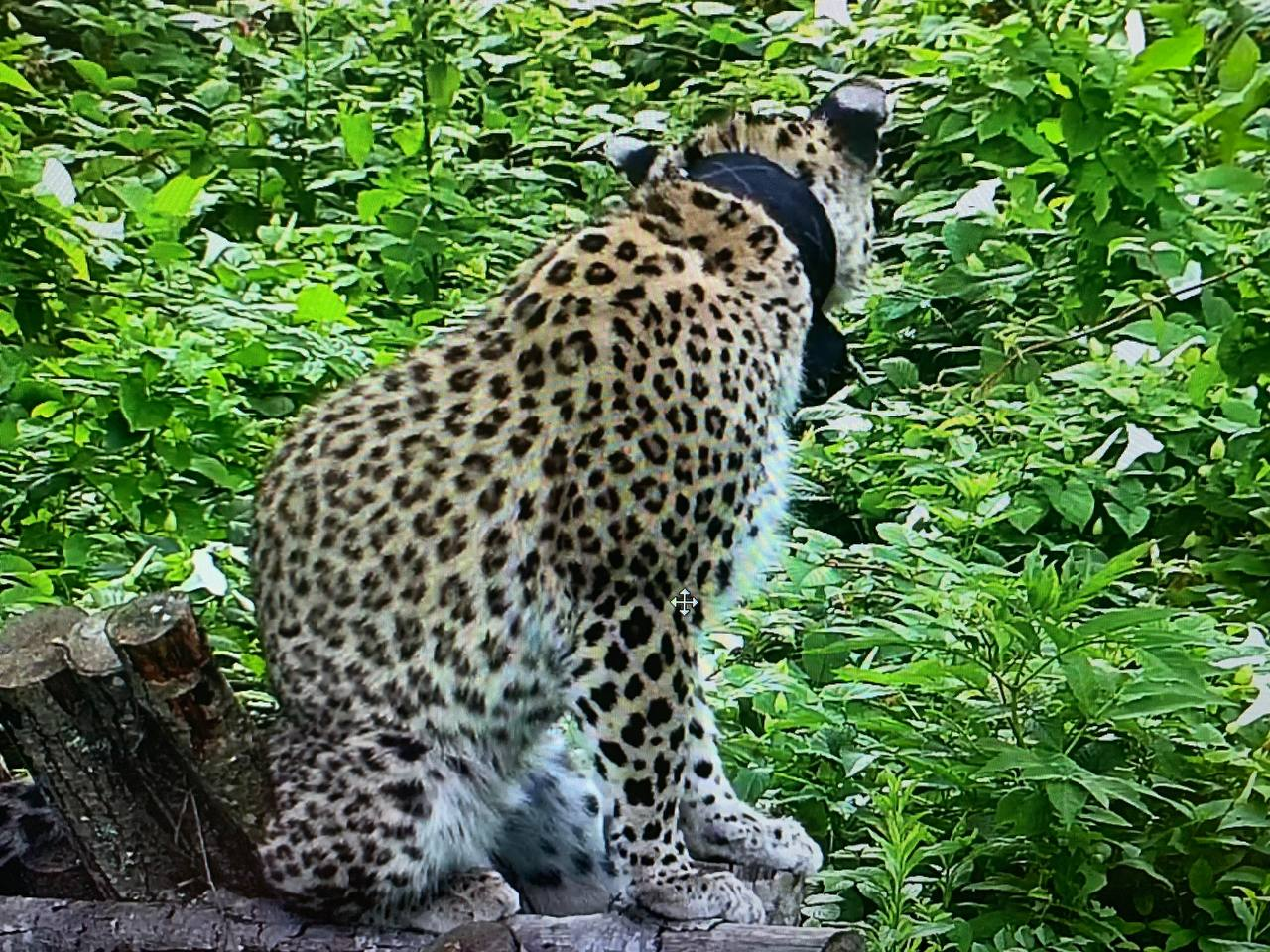
In mid-July, the next release of Caucasian leopards, which are traditionally called snow leopards in the Caucasus, is planned on the territory of North Ossetia-Alania. Among them are two females and one male, which will replenish the group of leopards that is being formed here.
In April 2022, a group of animal behavior specialists from four organizations (IEE RAS, IEGT RAS, World Fund for Nature and the Moscow Zoo) assessed the readiness of these animals for life in nature using special behavioral tests. Behavioral tests for these purposes were developed by IEE RAS staff back in 2016, then refined with the participation of animal welfare specialists from the Moscow Zoo, who have gained invaluable and unique experience, and are used to evaluate all leopards before release. “The principle of such a test of leopards is to create a situation for them that provokes the animal to make the wrong decision (for example, in the case of testing the reaction of a leopard to a human, to become interested in them). If the animal does not succumb to provocation and fear of a human keeps the animal from wanting to take an interest in a new object, then this decision will contribute to its survival in nature. Experts evaluate not only the reaction of the animal and its behavior in the situation itself, but also what decision the leopard makes after the situation is resolved: whether it goes to the place where the human was, whether it is interested in the direction where the human went. It is also very important to understand that in nature a leopard will not follow a man,” says Anna Yachmennikova. The check showed that all three leopards (females Khosta and Laura and male Leo) are ready for release.
Leo’s (younger brother of Elbrus and Baksan) parents are from the zoo in Lisbon. This is a young strong leopard, he is harmoniously built, his gait is smooth, springy. The animal did not show any signs of physical abnormalities, in particular, lameness or other movement disorders when moving in all types of gaits. The pattern of his skin is amazingly effective with large black rosettes, the pattern of elongated rosettes along the back is especially beautiful. He weighs 45 kg. It can be noted that he is rather lazy if he is full. Leo is not too curious, in any case, he has little initiative in showing curiosity. This leopard is generally friendly to other leopards, but has little interest in contact with other leopards. Leo is not as active compared to Hosta and Laura. By nature, he, apparently, is a fighter: the measurement of the coverage of his neck is almost the same as the head of a leopard itself, which is generally not typical for these animals. Leo is cautious, avoids a person if he is disturbed - he does not leave the shelter for a long time until the person retires to a safe distance.

Hosta and Laura (two younger sisters of Volna and Agura (Agunda): the animals are in good physical shape, healthy, flexible, well-fed within the normal range for their age. Their movements are clear, their gait is without disturbance, springy. Dexterous and enterprising, these leopards are distinguished by some traits of character. During the movement, they actively use trees, branches, protruding overhanging supports. Curious and observant, they actively respond to any events - including each other's activity. Despite attachment to each other, they are both very independent, careful and therefore have a high potential for survival in the wild.
A few days ago, a veterinary examination of all three cats was carried out, which confirmed that they are healthy and in excellent physical shape. Jose Antonio Hernandez-Blanco, a researcher at IEE RAS, tagged all three leopards at the Caucasus Leopard Recovery Center with GPS-GSM collars. These are Russian-made collars, they were developed by a team led by Alexander Minaev, an employee of the IEE RAS, and are a wonderful example of import substitution, suitable for working with animals in places with unstable cellular coverage. “We have been working with these collars for more than ten years. Their work is stable and, unlike imported analogues, they allow remotely obtaining information about the activity of tagged animals, which provides exceptional data on the daily rhythm and hunting behavior of leopards,” says José Antonio. The collars are equipped with a VHF transmitter, which allows you to confidently detect the animal even in areas without cellular communication, when specialists do not receive the GPS coordinates of the animal.
While the Republic of North Ossetia-Alania is preparing to welcome three new spotted inhabitants into its forests, leopards are slowly getting used to wearing collars. Now the IEE RAS regularly receives coordinates from the Centre's enclosures where these animals were raised, which validates the choice of this method of monitoring leopards after release. Information from the collars will allow specialists to quickly respond if the animals start moving in the direction of roads or settlements, and, if necessary, correct their route using light and noise.

In addition to collars, leopard tracking will also be carried out using a system of camera traps, which will soon be installed around the release site by a field team of zoologists with extensive experience in such work from the IEGT RAS and the North Ossetian Reserve. The IEE RAS is currently developing a system for the location of camera traps in Ossetia. “In the first days after release, leopards can hide, walk along the same paths near the release site. Based on the analysis of leopard location clusters released in 2018 and 2020, which came from their collars from places where the animal stayed to rest or ate prey, we can predict where the leopards now preparing for release may go. This allows planning for the installation of camera traps that can help us register leopards as soon as they are released. As the animals explore the now available space, analyzing the incoming locations from their collars, we can quickly change the location of the camera trap matrix. The dynamic matrix will help to get visual material about released leopards,” says Maria Chistopolova.
Starting from the very beginning of the project on the restoration of the leopard in the Caucasus (2007), a large group of scientists led by the IEE RAS organizes both the assessment of the current state of the habitats of these animals and the monitoring of their movements and the appearance of wild relatives of released leopards. More than ten organizations are involved in joint work on field monitoring of these animals. “It is very important for us that as a result of such a well-coordinated work of many specialists in North Ossetia, a group of Caucasian leopards is gradually being formed, which, we hope, will bring offspring and settle in the territory of neighboring republics,” says Vyacheslav Rozhnov, scientific supervisor of the work, academician of the Russian Academy of Sciences.
The program for the restoration of the snow leopard in the Caucasus is being implemented by the Ministry of Natural Resources of Russia with the participation of the Sochi National Park, the Caucasian Reserve, the North Ossetian Reserve, the Alania National Park, the World Fund for Nature, the A.N. Severtsov Institute of Ecology and Evolution of the Russian Academy of Sciences (IEE RAS), Institute of Ecology of Mountainous Territories. A.K. Tembotov RAS (IEGT RAS), Moscow Zoo, with the assistance of the International Union for Conservation of Nature (IUCN) and the European Association of Zoos and Aquariums (EAZA). Financial support for the monitoring of the Causasian leopard in the Caucasus is provided by VTB Bank. In North Ossetia, RusHydro is providing financial support for the population recovery program.
Материалы по теме:
Кубань 24: "В Сочи переднеазиатских леопардов готовят к выпуску в естественную среду обитания"
Сочи.com: "Сочинских леопардов выпустят в дикую природу"
93.ru: "Сочинские леопарды готовятся к переезду в дикие леса Северной Осетии"
Interfax-Россия: "Трех переднеазиатских леопардов выпустят на волю в Северной Осетии на этой неделе"
Interfax-Россия: "Троих воспитанников Центра восстановления леопардов на Кавказе готовят к выпуску в дикую природу"
Interfax-Россия: "Десять переднеазиатских леопардов выпустили за 6 лет в дикую природу Кавказа"
